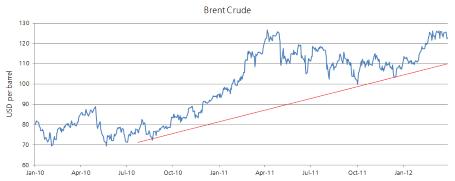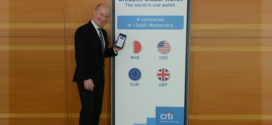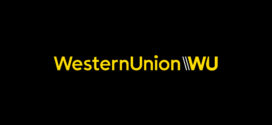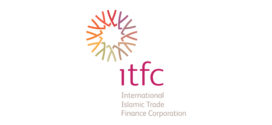Non-Independent Investment Research
 Energy markets will face a bumpy road ahead as geo-politics once again, just like a year ago with Libya, has intensified the unpredictable nature of oil markets. As tensions between the West and Iran over its nuclear intentions escalated during Q1 so too did the price of crude oil, to such an extent that it could eventually change the fundamental global economic outlook. With supply becoming increasingly scarce and demand, especially among emerging market (EM) countries, holding up focus has very much been on Saudi Arabia’s ability to continue to increase production as it almost single-handedly holds what’s currently left of any meaningful spare production capacity (estimated to be close to 2 million barrels per day).
Energy markets will face a bumpy road ahead as geo-politics once again, just like a year ago with Libya, has intensified the unpredictable nature of oil markets. As tensions between the West and Iran over its nuclear intentions escalated during Q1 so too did the price of crude oil, to such an extent that it could eventually change the fundamental global economic outlook. With supply becoming increasingly scarce and demand, especially among emerging market (EM) countries, holding up focus has very much been on Saudi Arabia’s ability to continue to increase production as it almost single-handedly holds what’s currently left of any meaningful spare production capacity (estimated to be close to 2 million barrels per day).
The price of Brent crude oil, the global benchmark for oil transactions, rallied by 18 percent during the first quarter and reached the highest level since 2008. The demand side has so far held up despite the rising cost to consumers, especially in countries such as the Eurozone, the UK and Turkey where weaker currencies have resulted in record oil prices. Speculative traders have supported the rally by building up one of the largest speculative long positions on record. Despite increased production from Libya and Iraq the supply side has been dogged by several smaller disruptions in the North Sea, Sudan, Syria and Yemen and not least slowing Iranian production due to sanctions. This tightening in supply has been eating into the available levels of spare capacity, most noticeably from Saudi Arabia and during the first quarter the market has been dangerously close to a balance between supply and demand.
Oil markets will only be able to absorb supply shocks with ample availability of spare capacity and the big question in the months ahead is how to achieve this. A sharp and continued rise in the cost of energy will eventually trigger a fundamental shift as demand begins to suffer. With consumers in several countries already now paying more at the pump than they did at the peak in 2008 the impact is slowly beginning to be felt. The price of retail gasoline in the US is fast approaching the important USD 4 per gallon mark and it is expected to rise to a new record once the peak driving season begins this summer. This is not good news for President Obama who will be fighting for re-election later this year as he would fear that this focus overshadows the signs of an improving economy.
In the absence of additional geo-political events we believe the price of Brent crude is approaching its peak as the rising cost of energy relative to GDP will begin to cap further advances. With Libya expected to reach pre-war production levels in April, Iraq producing the most ever in 30 years and China having raised domestic prices by seven percent in March, spare capacity should slowly begin to increase leaving oil markets much better balanced. In the near-term however prices probably need to remain relatively high given the reduced levels of spare capacity and low levels of inventories in some regions in order to achieve a better balance. On that basis we do not see the price of Brent much lower than 115 dollars per barrel in the coming months with the main downside price risk stemming from a potential exodus of speculative investors given the record high participation on the long side.
Gold investors ready for the challenge
Several dramatic setbacks during the last six months have removed some of the previous hype surrounding precious metals, especially gold. At the beginning of Q2 investors are still coming to terms with the improved US economic situation which is now challenging the perception that the Federal Reserve will keep rates low through 2014. This has shifted the focus from `risk-on/off´ to `growth-on´ and has resulted in rising bond yields which has left non-interest paying assets like precious metals exposed and it could challenge the near-term outlook.
We remain bullish however on the outlook for further price appreciation in the months ahead as the chance of further action from the Federal Reserve has not been removed. The US housing market is still only showing little sign of improvement and if bond yields continue to rise mortgage payments will follow thereby putting additional pressure on home owners. Several central banks continue to accumulate gold as a matter of diversification and previous setbacks have been met by strong physical demand, a trend we expect will continue. Investment demand through exchange traded products (ETP), which are categorised as long-term holdings, continues to increase and during recent setbacks the buying intensified. Tactical investors like hedge funds have reduced exposure thereby leaving them room to accumulate once the uptrend resumes.
Having almost reached our 1,800 target in Q1 we expect gold to consolidate during the early part of Q2 with focus remaining firmly on US economic data and the Federal Reserve. A continued rally of the dollar will create some headwind early on leaving it exposed to further downside pressure before consolidating. Investors will find the quarter challenging but we believe they will be ready for it and eventually take gold back to 1,800 and beyond later in the year. The ‘growth-on’ scenario could see platinum outperform as the price finally has moved back above that of gold for the first time in six months. Silver remains the high beta gold and could potentially also challenge gold on a relative basis, given its semi-industrial qualities.
Chinese slowdown and the impact on industrial metals
Following a strong rally in January industrial metals caught a bit of cold on emerging signs of slowing economic activity in China. Having traded sideways since late January the sector will be facing some headwinds as we move towards the second quarter. Strong domestic inventory builds of construction related commodities like copper and steel has created concerns about the size of the slowdown. Considering China represents more than 40 percent of global consumption and more than 50 percent of global consumption growth of the major industrial metals the outlook for this country holds the near-term key to price developments.
While we expect the demand for copper, the most widely used base metal, to be relatively soft problems with supplies is likely to keep prices range-bound in the second quarter. Output from some of the major producing countries has disappointed due to a variety of reasons such as labour disputes, adverse weather, technical issues and a general falling ore grade as some of the major mines have reached maturity. While speculative investors are net long of copper into Q2 the uncertainty is highlighted by the fact that both major short and long positions are currently held in high grade copper. On that basis we expect HG copper to trade between USD 3.6 and 4.0 per pound but given the immediate softer outlook the risk is skewed towards the downside of that range.
inventories of key crops under pressure
Lower supplies of soybeans from drought stricken Brazil and Argentina have triggered increased export demand for US produced beans and led to higher prices. As a consequence, soybeans have outperformed corn (the other high protein crop) by more than 10 percent during the first quarter. As the annual ‘battle for acreage” in the US approaches, these price developments could trigger some rethinking by US farmers with some switching planting from corn to soybeans in order to achieve a higher return. This carries the risk of lower than expected corn inventories this coming winter and it will help keep corn prices supported until we know what kind of balance will be struck between the crops during the new planting season. The price of the new crop soybean future is likely to remain in its 2011 range between 13 and 14.5 per bushels until further news about planting intentions becomes available.
 Cash And Trade Magazine For Cash and Trade professionals in the Middle East
Cash And Trade Magazine For Cash and Trade professionals in the Middle East






